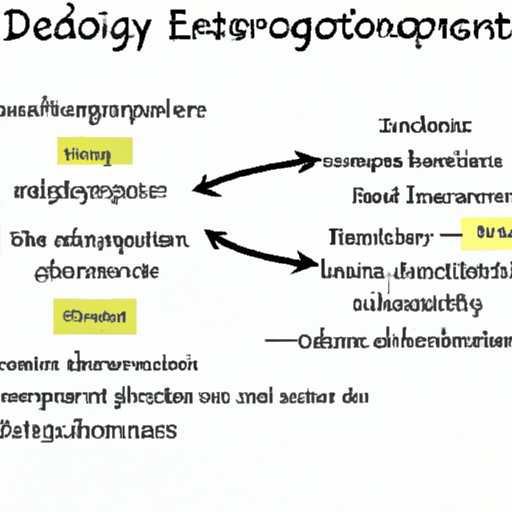Exploring the Definition of Ecosystem in Science
An ecosystem is a complex and interdependent network of living organisms and their physical environment. It is a dynamic web of interactions between biotic (living) components and abiotic (non-living) components that interact with one another to form a self-sustaining system. In this article, we will explore the definition of an ecosystem in science, its types, complexities, role in nature, and components such as producers, consumers, and decomposers.
Definition of an Ecosystem
The term “ecosystem” was first coined by British ecologist Arthur Tansley in 1935. According to Tansley, an ecosystem is “a functional unit consisting of all the living organisms in a given area together with their non-living environment, interacting as a system.”
Types of Ecosystems
There are many different types of ecosystems, including terrestrial (land-based) ecosystems such as forests, grasslands, and deserts; aquatic (water-based) ecosystems such as lakes, rivers, and oceans; and urban ecosystems such as cities and towns. Each of these ecosystems has unique characteristics that distinguish it from other ecosystems.
Understanding the Complexities of an Ecosystem
An ecosystem is a highly complex and dynamic system, with many factors affecting its health and functioning. These factors include climate, land use, water availability, and human activities. All of these factors can have both positive and negative impacts on an ecosystem, depending on how they are managed.
Abiotic and Biotic Components
An ecosystem consists of both abiotic (non-living) components such as soil, rocks, and water, and biotic (living) components such as plants, animals, and microorganisms. These components interact with each other to create a self-sustaining system. For example, plants provide food and shelter for animals, while animals provide fertilizer for plants.
Interconnectivity of Ecosystems
Ecosystems are also interconnected, meaning that changes in one ecosystem can affect other ecosystems. For example, changes in land use or water availability in one area can lead to changes in species composition or population dynamics in another area. This interconnectedness highlights the importance of managing ecosystems responsibly.

Defining the Role of an Ecosystem in Nature
Ecosystems play an important role in maintaining the balance of nature. They provide essential services such as clean air, water, and food, which are necessary for human survival. They also help regulate climate, prevent floods and droughts, and support biodiversity.
Ecosystem Services
Ecosystem services are the benefits humans receive from ecosystems. They include things like clean air and water, food production, flood and drought regulation, and recreational opportunities. These services are essential for human well-being and economic development.
The Importance of Ecosystems
Ecosystems are essential for human survival and prosperity, and it is important that we protect and manage them responsibly. According to a recent study by the United Nations, “the protection and sustainable management of ecosystems is essential for achieving global goals on poverty reduction, food security, and climate change adaptation.”

Examining the Components of an Ecosystem
An ecosystem is made up of several components, including producers, consumers, and decomposers. Producers, such as plants, use energy from the sun to produce food. Consumers, such as animals, feed on producers and other consumers. Decomposers, such as bacteria and fungi, break down dead organic matter and release nutrients into the environment.

Investigating the Interconnectedness of an Ecosystem
Ecosystems are also interconnected through food chains and food webs. Food chains are linear sequences of organisms that link producers to consumers. Food webs are more complex networks of interconnected food chains, which show the relationships between different species in an ecosystem. These interconnected food webs demonstrate the importance of biodiversity in an ecosystem.
Conclusion
In conclusion, an ecosystem is a complex and interdependent network of living organisms and their physical environment. It is a dynamic web of interactions between biotic and abiotic components that interact with one another to form a self-sustaining system. Understanding the definition of an ecosystem in science, its types, complexities, role in nature, and components such as producers, consumers, and decomposers is essential for protecting and managing ecosystems responsibly.
(Note: Is this article not meeting your expectations? Do you have knowledge or insights to share? Unlock new opportunities and expand your reach by joining our authors team. Click Registration to join us and share your expertise with our readers.)
